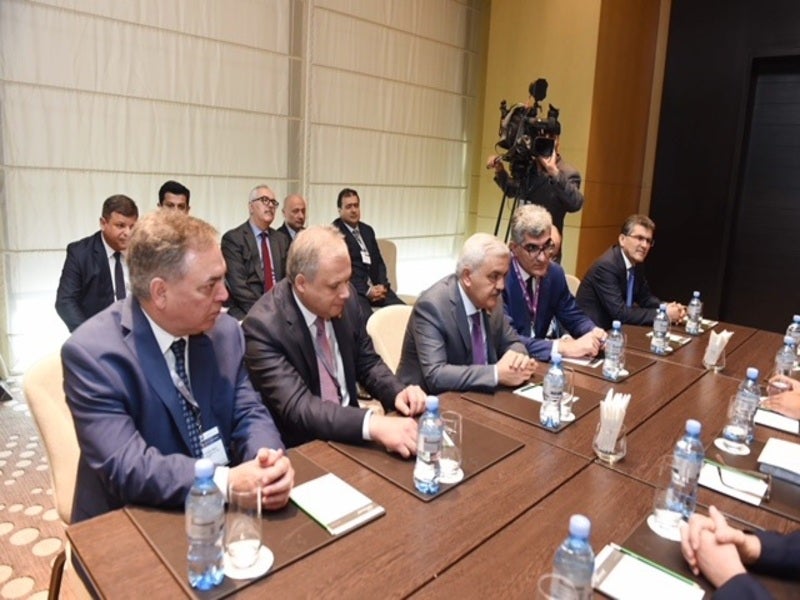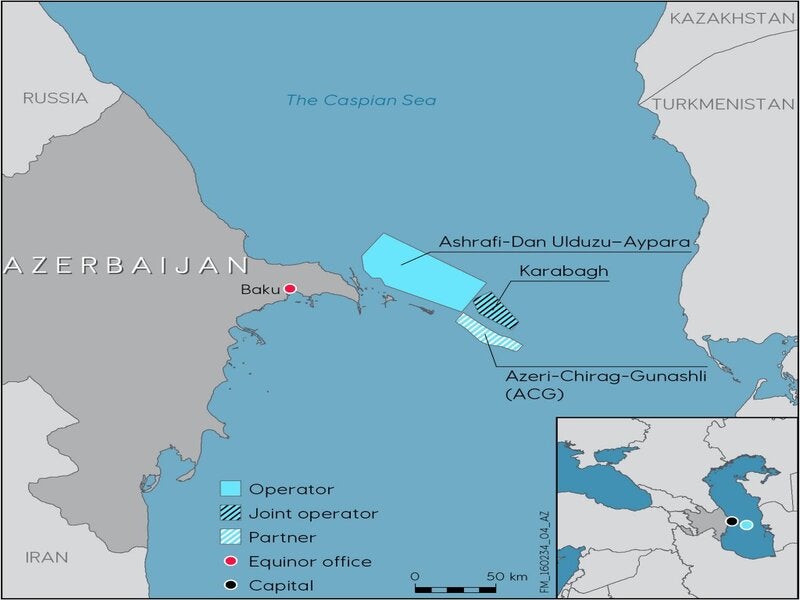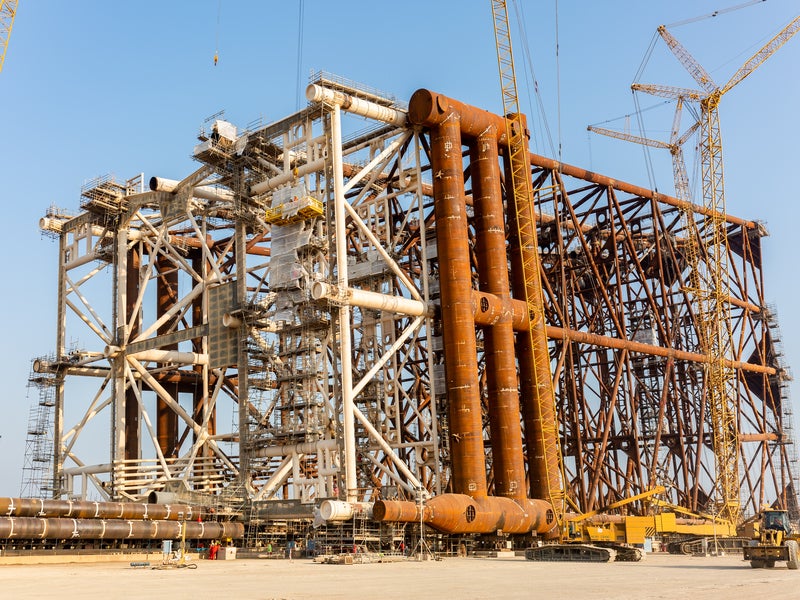The Karabagh oil field is located approximately 120km offshore Baku, in the Caspian Sea, Azerbaijan.
The offshore oil field project is being developed through a joint venture partnership between the State Oil Company of the Azerbaijan Republic (SOCAR) and Equinor (formerly Statoil).
Equinor completed the environmental impact assessment (EIA) for the Karabagh oil field development in April 2018. It was followed by the signing of an equal share risk agreement for the appraisal and development of the field by the project partners in May 2018.
While the gas discovery at the field was made in the 1990s, the appraisal drilling for oil resources was started in December 2019 and a major oil discovery at the Karabagh field was confirmed in March 2020.
The offshore field is estimated to hold approximately 60 million tonnes of oil reserves in place.
The main jacket for the Karabagh field was launched by the president of the Republic of Azerbaijan in August 2020 with the first oil expected by 2022.
Location and reservoir details
The Karabagh oil field lies close to Azeri-Chirag-Gunashli (ACG) oil and gas field, approximately 25km away from the Oil Rocks, in the northern part of Absheron archipelago.
The Karabagh prospect and the surrounding area cover approximately 427.3km2. The oil field lies at a depth of up to 200m in the open sea, adjacent to the Ashrafi-Dan Ulduzu-Aypara (ADUA) exploration area.
The Karabagh oil reservoir is located approximately 3.4km-deep beneath the seabed.
Karabagh offshore oil field development plan
The Karabagh offshore oil field development plan involves six crude production wells and three water injector wells.
Drilling of the first appraisal well, KPS-4, at the field commenced in December 2019. The well was drilled to a depth of 180m using the Dada Gorgud semi-submersible drilling rig, which is owned by Caspian Drilling Company.
The Karabagh jacket, the largest underwater structure, at the field was configured as a grid-type metal structure to support the deck and topside modules of the stationary platform.
The 16,000 tonnes (t) Karabagh jacket structure was fabricated by SOCAR at the Heydar Aliyev factory. It will be installed at a water depth of 182m. The topsides for the Karabagh are still in the pre-front-end engineering and design stage.
The Karabagh production platform will be connected to the BP-operated West Chirag platform of the Azeri-Chirag-Gunashli (ACG) oil and gas field, from where the oil and gas output will be sent onshore to the Sangachal terminal which is also operated by BP.
The field is expected to produce approximately 11 million barrels of oil and 1.5 billion cubic metres (bcm) of gas a year.
Contractors involved
BOS Shelf, a subsidiary of SOCAR, was contracted for the construction of the Karabagh jacket.
Caspian Drilling Company signed a contract with Equinor for drilling two appraisal wells in the Karabagh offshore field in March 2019.
Caspian Geophysical was awarded a £5.78m ($9m) contract for a 3D seismic survey of the Karabagh offshore oil field development in 1996.
CIPCO signed a contract with SOCAR for the initial development of the field in November 1995.
Karabagh oil field development background
The gas reserves at the Karabagh prospect were confirmed through exploration drilling during the period 1997-1998.
A total of three exploration wells were drilled by a consortium led by Caspian International Petroleum Company (CIPCO) under a production sharing agreement (PSA) signed in 1995.
Two wells were drilled in the southeast area that confirmed the presence of gas while the third well drilled in the western part of the field indicated the presence of oil.
The field development, however, was abandoned following the termination of the PSA due to non-commercial discovery in 1999.





